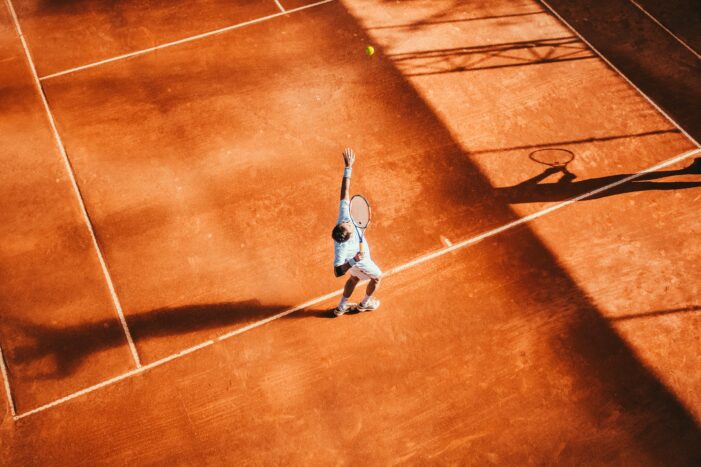The ace has long been one of the most powerful weapons in the game of tennis. An ace is a serve that lands in bounds and is not touched by the receiver, resulting in an immediate point for the server. It is a very effective way to win a point, yet its power goes beyond just the point.
In this article, we will explore the power of the ace and its implications in the game of tennis.
Definition of the Ace
In tennis, an ace is a winning shot that directly lands in the opponent’s court and is not touched by the racquet. They are powerful tools used to help a player achieve victory during a match, but their success relies heavily on the strategy and skill of the player who produces them.
They land directly in the opposing court without giving your opponent the opportunity to react or respond. They can also cause significant damage to the enemy’s momentum since they cannot prepare for them or counter-attack immediately afterward. However, experienced players are able to read the trajectory of the shuttlecock and react accordingly.
A successful ace is not only strategic; it also requires exceptional skill with techniques such as timing, force control, and direction control. Players who remain focused on their placement can increase their chances of an ace successfully landing in their opponent’s court by analyzing movements and anticipating his/her reaction time before hitting a winning shot.
Knowing which court space your opponent tends to defend can also be helpful when deciding which side of the court to hit an ace into for maximum effectiveness and impact on your opponent’s game-play strategy.
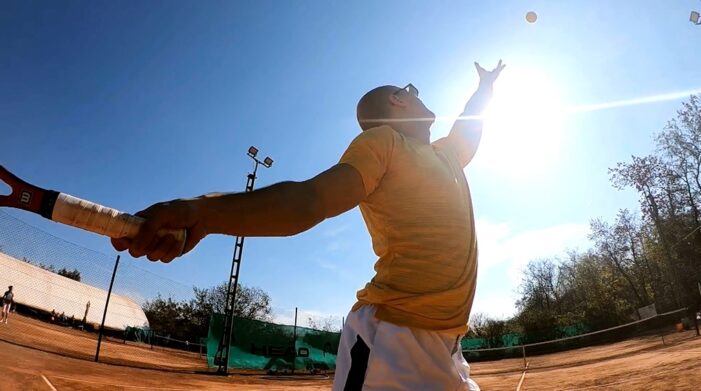
Origins
The origins of ace are believed to be from the phrase “at service” in French. This phrase is often thought to be an acronym for At La Service Of, which relates to the fact that serves must travel over the net and into their opponent’s court in order to be successful.
Its power of it has been further developed over time through increased racket advancements and player technique. For example, the Introduction of stiffer frames with larger sweet spots was introduced during the late 1950s and helped players produce more powerful serves that had previously been unachievable with traditional wooden framed rackets.
In addition, new surface types such as clay courts provided players with added control when delivering powerful serve due to their natural grip-like properties. Couple this with skillful ball placement further down the opponent’s court enabled servers to routinely hit unreturnable shots or Aces.
Today they continue to remain popular due to their impact on matches which can potentially help turn games around very quickly or even settle tie-breaks scenarios which are paramount in high-profile Grand Slam Games such as Wimbledon or The US Open making them a familiar sight once more at these elite sporting events!
Evolution of the Ace
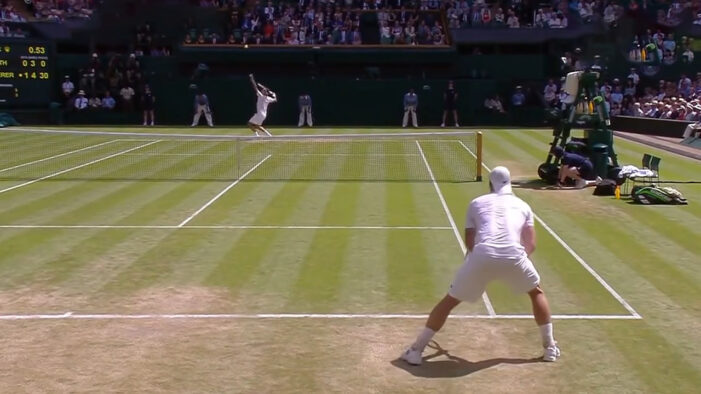
In the modern game of tennis, it is the most powerful and difficult shot to return. While the ace is widely acknowledged as a key skill in tennis, its origin remains a bit of a mystery. The earliest mention of an “ace” dates back to 1887, but it wasn’t until 1923 that the term began being used consistently to refer to a service winner.
As tennis transitioned from outdoor courts with meshed wire netting to tarpaulined clay surfaces, groundstrokes became more powerful, and complicated timings evolved. In 1908 ballboys were trained to stand ready at each end of the court and throw balls across in case someone needed one when they served – thus designated as “the ace boy.”
By 1910 the “service line” had become fixed marking at 16 feet from the net poles making it easier for players serving from different rulers positions- shortening distances or expansion angles of serving an “ace”.
Throughout its development, the service-winning shot has remained central for tactical strategies between professional players- adding depth and expected challenges during each game – helping position the modern ace shot within competitive tennis today!
The Impact
The ace is one of the most powerful shots in tennis, and it can have a huge impact on the outcome of the game. It can give a player an edge by allowing them to score a point without their opponent getting a chance to respond.
In this section, we’ll look into the different scenarios where an ace can be used effectively and how to use it to your advantage.
Psychological Impact
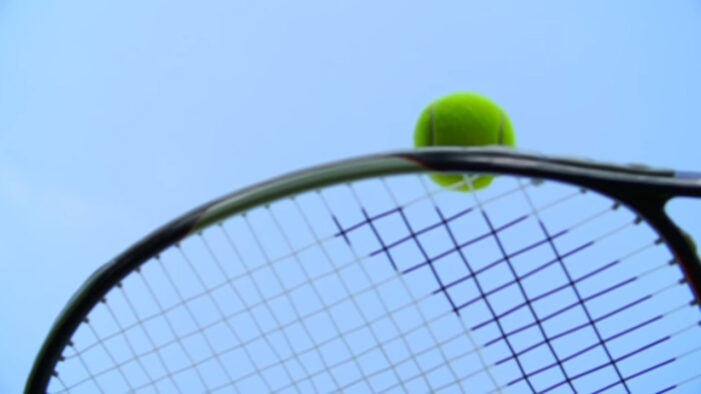
In addition to giving its holder a literal ace up the sleeve, it can also be a psychological weapon in gameplay. It can make an opponent doubt their strategy, question their ability, or lose confidence in their shots. It can cause an even greater sense of despair, as it leaves opponents without much hope for winning points or challenging an otherwise solid serve over and over again.
Many players grunt for the same reason, to distract their opponents so they can miss their shot and secure a winning round.
When an Ace is served with power and precision, it has the potential to inject fear into an opponent. Fear feeds hesitation and caution which leads to poor performance—whereas focus, concentration, and confidence lead to winning shots.
Whether on the receiving end of these intimidating serves or offering them up as warnings of superior play, players need to prepare mentally for mastering this unique ability that only those with heavy weaponry are able to possess.
These serves can have the arresting capability that makes these super weapons unlike any other in tennis; but only if deployed correctly. Successful deployment is determined by speed and spins balanced with placement in different parts of the court as well as a servant’s consistency from point to point — a consistency that many pundits believe separates players from one another during critical match situations.
Strategic Impact
If you are serving, having an ace can be very advantageous. It gives you a great chance of winning the point outright because of how difficult it is to return. An ace can also psychologically intimidate your opponent since they know they have no chance of returning it successfully.
Therefore, having an ace in your arsenal can be used as a way to put pressure on your opponent or catch them off guard with a well-timed serve when least expected.
Serving effectively is one of the most important skills in any tennis match, so having reliable tools and strategies to do so makes all the difference. The power of an ace should never be underestimated because while difficult to land consistently, they can make all the difference between winning or losing the most important points in any game.
Techniques to Improve Your Ace
It is one of the most powerful weapons on the tennis court. It is a service that is unreturnable due to its speed, placement, or spin. A strong one can easily win a point, and it can often be the difference between a win and a loss in a match.
In this section, we will discuss different techniques to improve your Ace and how they can help you become a better tennis player.
Serve Variations
When playing the game of tennis, having a reliable serve helps you stay in control of the match when it starts. To be successful, you will need to learn several types of serves so that you can mix up your delivery and keep your opponent guessing. Mastering these techniques and customizing them to your own style of play is an important step towards becoming a great tennis player.
The types of serves that can help improve your game are depending on how accurately and fiercely you wish to hit them:
- Flat Serve: The flattest possible serve, with no spin on the ball. This is delivered at a high speed with the intention to go straight down the opposite court’s sidelines.
- Slice Serve: A serve that spins away from the hitting player as it travels down into their opponent’s court. It is useful for a player looking to land their shots wide across their opponent’s court.
- Kick Serve: This type of serve has more topspin and kick off the surface where you have hit it than any other type of serve. Kick serves are most commonly used by players who like to approach the net or use short angled shots due to their higher bounce on impact.
- Topspin Serve: This type of service has more topspin which gives it more mobility and control over its trajectory upon impact with its destination court surface, regardless if this is done offsides or backhand from an opposite court or forehand from unison side as well respectively.
Placement and Spin
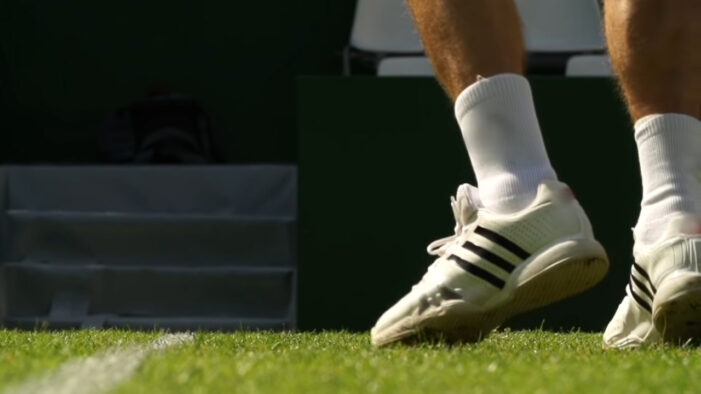
When serving an ace, the goal is to have the ball land where the opponent can’t reach it. Accomplish this by placing your serve strategically. Aim to keep your serves low and close to the net so that your opponent has less time to move and react.
Additionally, you can use spin to make it difficult for your opponent to return the ball. For example, a “kick” serve is a type of spin where the ball is served with a topspin.
The topspin causes the ball to shoot up after bouncing, making it harder for your opponent to return it. It can be especially helpful when trying to ace against tall opponents since they will have difficulty reaching a bouncing ball near the net.
If you’re struggling with placement, practice serving in different quadrants of the court until you find accuracy and consistency in one or two spots. To improve your kick serve, try repeating basic drills while incorporating different amounts of spin on each shot.
With practice and patience, these techniques will help increase both placement and power on your serves — improving your chances of earning an ace!
FAQs
Can a player hit an ace in doubles tennis?
Yes, a player can hit it in doubles tennis, although it is less common than in singles.
What is the record for the most aces hit in a single match?
The record is held by John Isner, who hit 113 aces in a marathon match against Nicolas Mahut at Wimbledon in 2010.
Can a player win a set or a match with just aces?
No, a player must win points through their combination and other methods, such as winners or errors by the opponent.
Are aces the only way to win points on a serve?
No, players can also win points on a serve by hitting a service winner or by forcing an error from the opponent.
How can a player improve their chances of hitting an ace in tennis?
Players can improve their chances of hitting it by practicing their serve technique, increasing their serving speed, and varying their serve placement.
How does an opponent try to return an ace in tennis?
An opponent typically tries to return an ace by anticipating the serve direction and moving quickly to get into position to make the return.
Are aces more common on grass courts than on other surfaces?
They can be more common on grass courts due to the lower bounce of the ball, which can make it more difficult for the opponent to return a well-placed serve.
Is hitting aces a crucial part of a player’s strategy in tennis?
Hitting them can be an important part of a player’s strategy in tennis, particularly for players with a strong serve. However, it is only one aspect of a player’s overall game and should be used strategically in combination with other shots and tactics.
Conclusion
While there is no doubt that the ace serves as an essential part of a successful tennis game, it is important to remember that the power of the ace does not completely guarantee victory.
Although a successful ace can give a player an advantage in the match, there are still many other factors that come into play in determining the outcome, including skill, strategy and mental preparation.
In the end, each player must take advantage of all the tools available to them in order to reach success.

